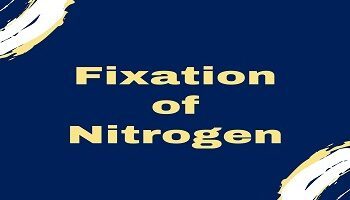Table of Contents
Gibbs Free Energy:
J. Willard Gibbs has introduced the term free energy to predict the direction of spontaneity. Gibbs energy of a system is defined as, “the maximum amount of energy available to a system during a process that can be converted into useful work”.
In other words, it is a thermodynamic quantity that is a measure of the capacity of a system to do useful work. It is denoted by the symbol ‘G’. The Gibbs free energy is related to enthalpy (H) and entropy (S) as-
| G = H – TS |
Where ‘H’ is the enthalpy of the system, ‘S’ is its entropy and ‘T’ is the absolute temperature. Gibbs free energy is also called as Gibbs function.
Gibbs Free Energy Change:
Gibbs free energy change is a state function i.e.,
| ΔG = G2 – G1 |
Let a system changes from the initial state to the final state at constant temperature (T).
| At initial state: G1 = H1 – TS1 ……………….(i) At final state: G2 = H2 – TS2 ……………….(ii) Subtract equation (i) from (ii)- G2 – G1 = H2 – H1 – TS2 + TS1 ΔG = ΔH – T (S2 – S1) ΔG = ΔH – TΔS |
This equation is called the Gibbs Helmholtz equation and is very useful in predicting the spontaneity of a process.
Units of ΔG:
ΔG has the units of energy i.e. KJ mol-1. S.I. unit is J/mol.
Gibbs Free Energy Change used in Prediciting Spontaneity of a Reaction:
For a non-isolated system, according to the second law of thermodynamics, the total entropy change during a process is given by-
| ΔStotal = ΔSsys + ΔSsurr …………………….(a) |
Let the reaction or process be carried out at constant temperature and pressure. Let the surroundings have lost ‘q’ amount of heat while the system has gained the same. If the heat lost by the surroundings is given by qp, then-
| ΔSsurr = -qp/T Since qp = ΔH, therefore ΔSsurr = – ΔH/T Substitute the value of ΔSsurr in the equation (a) ΔStotal = ΔSsys – ΔH/T ΔStotal = ΔS – ΔH/T …………(ΔSsys = ΔS) Multiply both sides by T TΔStotal = TΔS – ΔH or -TΔStotal = ΔH – TΔS, But ΔG = ΔH – TΔS Thus ΔG = -TΔS |
For spontaneous chemical changes, ΔStotal and T are positive, therefore, ΔG = negative for a spontaneous chemical change.









Comments (No)